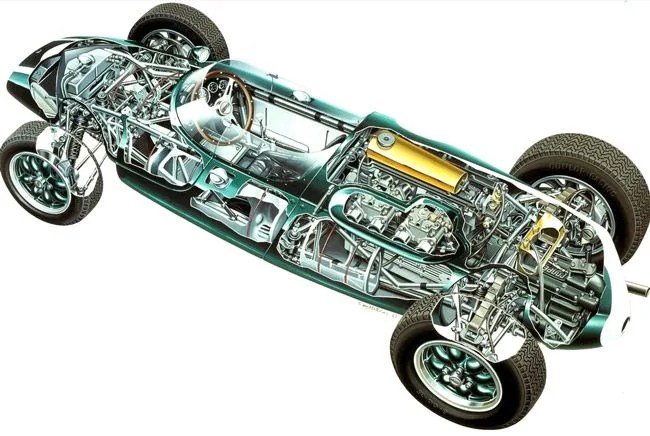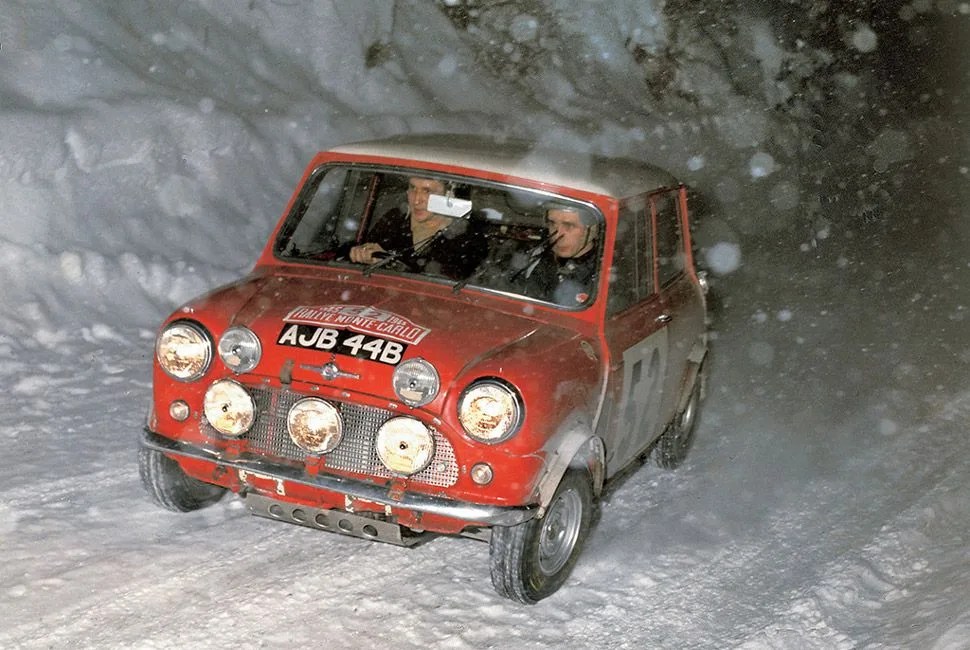Though automobile racing has been with us as long as the automobile has, it wasn’t until the healing years after WWII that it began to come into its own. During this time, new motorsport operations sprung up and contributed to the advancement of technology and engineering in racing cars — and subsequently — road cars. But there was one man and his company that, despite being a small, independent operation, would change motorsport forever.
Founded by John Cooper and his father Charles, the Cooper Car Company was a genuine grassroots operation. John Cooper dropped out of school when he was 15 to work as an apprentice for one of his father’s companies (he himself was an automotive engineer), and eventually worked for a toolmaker who made aircraft instruments used by the RAF during the second World War. In 1946, after the war, the father-and-son team (along with John’s friend Eric Brandon) started building Formula 3 cars in a small garage in Surbiton, England. Their first model — the Cooper 500 — was powered by a 500cc JA Prestwich motorcycle engine and built from the scraps of two Fiat Topolinos. The car was originally raced by John and Eric, but its success garnered attention from other racers, leading to production on a bigger scale so cars could be sold to privateers. Between 1951 and 1954, 64 out of 78 major races were won by Cooper F3 cars.
What made the machines so dominant was the placement of the car’s engine behind the driver. Before WWII, Auto Union used the mid-rear engine placement in their “Silver Arrows” Grand Prix cars, but the engines were only moderately successful and the practice quickly died out. In the late ’50s, Cooper revived the practice when laying out his cars, but he never claimed the innovation was a stroke of original genius — rather, he used the mid-rear engine placement as a practical means of engineering convenience. Since the engine in the car was from a motorcycle, it was set up to drive a chain. Putting it at the back provided the simplest setup, and thus was easier to make and lighter to build. As collateral, having the engine in the back also made the car more balanced.

In 1950, the Cooper had its first appearance in a Grand Prix event in a modified Cooper 500. It debuted at the Monaco GP, though it retired after a single lap. This was the first of the Coopers to be used in top-tier racing. In 1958, the Cooper finally got its first Grand Prix win. The Argentina Grand Prix that year was paying particularly good start money for teams to enter, and because of development issues at Vanwall, their contracted driver — Stirling Moss — was able to compete in the race for a privateer team fielding a Cooper T43 instead. Interestingly enough, the race promoters initially refused to pay for the Cooper to start because it didn’t look the part of a Grand Prix racer, but the T43’s balanced chassis at the skilled hands of Moss beat out the factory-backed Italian giants Ferrari and Maserati, and it earned Cooper Cars serious notoriety.
The T51 became the first mid-rear-engine car in Formula 1 to win a Driver’s Championship as well as the first to win a Constructor’s championship.
Then, in 1959, Cooper Cars continued its historic run. Cooper fielded a new T51 car, powered by a 2.5-liter four-cylinder specially built by Coventry Climax to work in a rear-mounted position. Piloted by Australian driver Jack Brabham, the T51 became the first mid-rear-engine car in Formula 1 to win a Driver’s Championship as well as the first to win a Constructor’s championship. It was also the second British car to win an F1 championship (the first was a Vanwall the year prior). In 1960, both Brabham and the Cooper team won their respective titles one more time. After that, other teams caught on and started building racers with the engine aft of the driver. Bigger teams than Cooper — like Lotus, Lola and Ferrari — were able to put more money into improving the concept, and Cooper Cars began to fade into obscurity.

